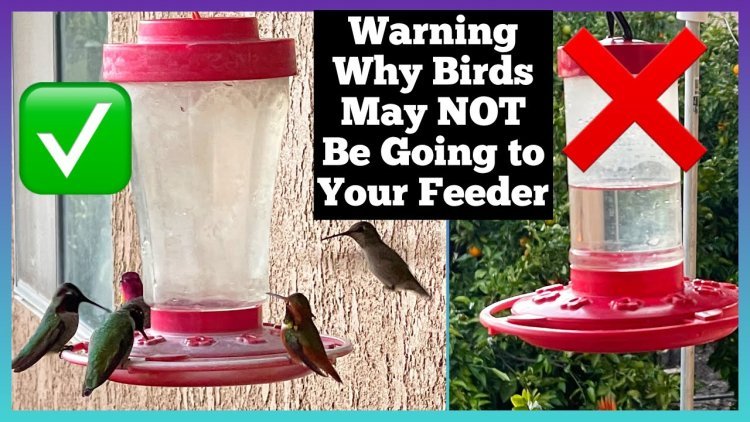How Often You Should Change Out Hummingbird Sugar Water to Keep Them Healthy
It highlights the importance of the task for the well-being of the hummingbirds, which can attract viewers who are concerned about the health of their feathered friends.

How Often You Should Change Out Hummingbird Sugar Water
There have been several warnings in recent years about some hummingbird feeders doing more harm than good. There are many rules for making hummingbird food, like which sweetener to use, whether to add dyes, the right sweetener-to-water ratio, and now, when to change the sugar water.
Though it can be annoying, it's crucial to make these changes to keep hummingbirds healthy. It also ensures they return year after year.
How Often Do You Need to Change Out Hummingbird Sugar Water?
Hummingbird feeders are a great way to see these tiny birds, but it's important to make sure you're actually helping them. So, how often should you change and clean your hummingbird feeder? There's no exact answer. Depending on the temperature, shade, and location, the range varies.
Generally, every three days is recommended. In cooler climates with shade, you might wait up to five days. In hotter weather, every other day or even daily may be best.
Why Is it Important to Change Sugar Water Frequently?
It may seem like a hassle to clean hummingbird feeders so often, but there's a good reason. Sugar can ferment and grow mold, both of which are dangerous to hummingbirds. The most immediate danger is a swollen tongue, which prevents them from eating.
Hummingbirds have high metabolisms and need to eat four to six times an hour to get all the nutrients and calories they need. A swollen tongue is dangerous and deadly. Some birds swell right away, making it impossible to get their tongues out of the feeders.
This is a very scary and deadly situation for hummingbirds. This, along with the long-term effects of mold, is why it's necessary to clean feeders.
Another reason to clean your feeder often is to prevent attracting insects like wasps and bees. While bees are helpful, you don't want them on your feeder. They compete with hummingbirds for food and may sting the birds if they fight for space.
Cleaning your feeder helps keep insects away. If there's sugar water around the feeder from spills, bees and wasps will gather.
Also, it's a good idea not to fill the feeder all the way. Hummingbirds have long tongues that reach into the feeder for nectar. Bees and wasps don't have that ability. By filling the feeder only a little, you waste less nectar and keep harmful insects away.
How to Clean Hummingbird Feeders
Cleaning feeders requires more than just dumping out old sugar water and adding fresh water. You need to take the time to clean the feeder. Use mild soap and water with sponges to clean all the old sugar. Clean the inside, outside, and all grooves.
Then, thoroughly rinse the container to remove all soap. You can add sugar water right away or let it air dry. Drying it with a towel isn't ideal as it can leave particles and fabric traces harmful to hummingbirds.
Some people use other tricks to remove stubborn nectar. For example, soaking the feeder in vinegar before rinsing and washing helps fight mold and break up sugar.
Another method is using parakeet gravel. This small grit helps with digestion for pet birds. It's tough like charcoal and oyster shells and works well when tossed into a feeder with water and soap to scrub sides and edges you can't reach.
What's Your Reaction?






















